The iPhone 6 Review
by Joshua Ho, Brandon Chester, Chris Heinonen & Ryan Smith on September 30, 2014 8:01 AM EST- Posted in
- Smartphones
- Apple
- Mobile
- iPhone 6
Display
As the primary mode of interaction with the phone, the display is one of the most important areas of evaluation. Of course, the methods of evaluation can be hotly debated. There is a great deal of subjectivity in this area in terms of what someone prefers. However, for the sake of color calibration our tests follow world-wide standards instead of personal preference one way or another. This means that we use the sRGB gamut and 2.2 gamma, which most content is adapted to. While AdobeRGB and other gamuts exist, these are for limited use cases and only applicable to operating systems that are aware of multiple gamuts and can dynamically switch between them depending upon the metadata of the content. In order to accurately test for how well a display conforms to these standards, we use SpectraCal’s CalMAN 5 along with a spectrophotometer for accurate color readings.
For those that are unfamiliar with the display of the iPhone 6 and Apple’s key marketing points on this new model, the improvements are mostly centered on higher resolution, contrast, and better viewing angles. In terms of higher resolution the iPhone 6 moves from the 1136x640 pixels of the iPhone 5/5s generation to 1334x750 pixels. However, this doesn’t improve the pixel density, which remains at 326 pixels per inch.
In practice, I definitely continue to notice the difference in resolution when using the iPhone 6 as opposed to the higher pixel density iPhone 6 Plus and the various Android smartphones with 450+ PPI displays. I definitely don’t find the resolution to be a problem though, as these issues only become significant to me below 300 PPI. I do think that around 450 to 500 PPI is the right place to be when balancing pixel density and power, but Apple’s choice should pay off in the form of better power consumption especially because LED backlights rapidly lose efficiency near the highest current region.
The other issue at hand is that of viewing angles. While Apple is one of the first to really talk about dual domain pixels, this technique is rather commonly used to improve viewing angles. The result is that a pair of pixels will appear to be a chevron, and overall the pixels appear to be squiggly in nature. While this doesn’t really change the readability of the display at extreme angles, colors like white no longer have noticeable red/yellow/blue shifts depending upon the angle that the display is shifted at.
This is definitely noticeable in everyday use, as the iPhone 5s could only avoid color shifting at certain angles instead of every angle. As I predicted in the launch article though, the one caveat seems to be that black has a noticeable shift towards purple in certain angles. There's also a noticeable hatching on close examination, but this doesn't affect image quality. This is definitely better than what I see on AMOLED though, as while AMOLED has much better brightness stability the color shifting is far more obvious and significant.

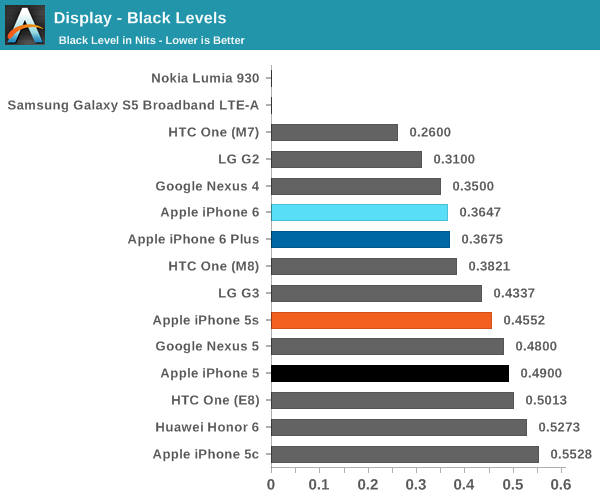

Now that we’ve covered the other two, we can talk about contrast. For this test, we measure brightness of 100% white and black at maximum display brightness, and look at the ratio. While we’re looking into getting patterns that can’t be defeated by dynamic contrast/backlight this should give an idea of best case contrast. In this case, peak brightness is on the high side at 560 nits, with relatively low black brightness at about a third of a nit. The result is one of the best contrast ratios I’ve ever seen. While the HTC One (M7) has a 1743:1 contrast ratio in our tests, some testing I’ve done indicates that the true contrast ratio is realistically around that of the One (M8). I’m not quite sure how this was done, but Apple stated that a new deposition process was used for the liquid crystals. This, along with changes to the liquid crystals themselves, could be responsible for the improved contrast.
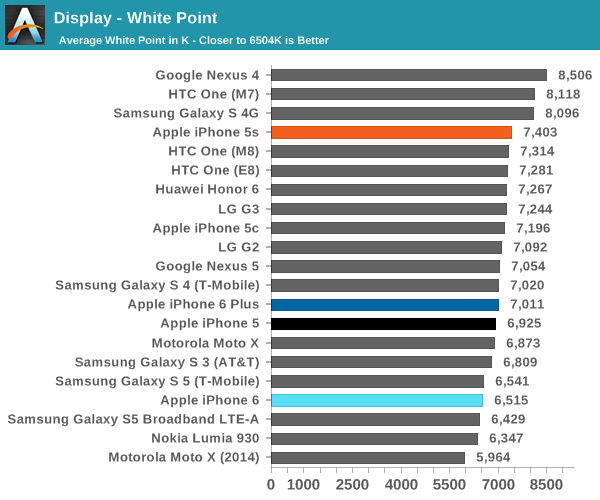
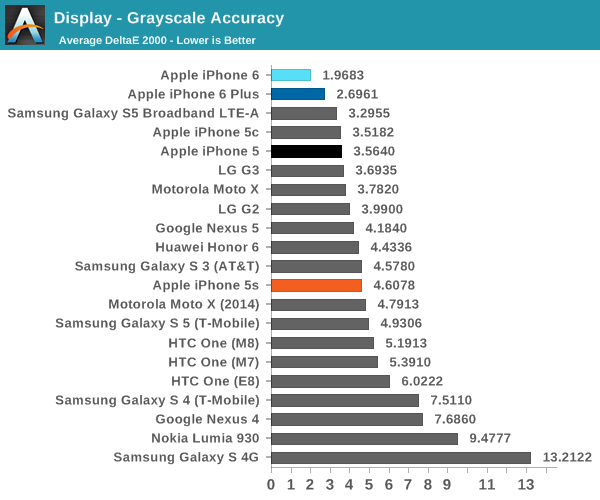
The next part to talk about is grayscale, which is an area where Apple seemed to prefer bluer color balances. I don’t really have much to pick at here, because the level of calibration here is incredible. While there is a noticeable trend of overshooting red at the low end and undershooting red at the high end, this is nitpicking at best. At any rate, this is essentially perfect.
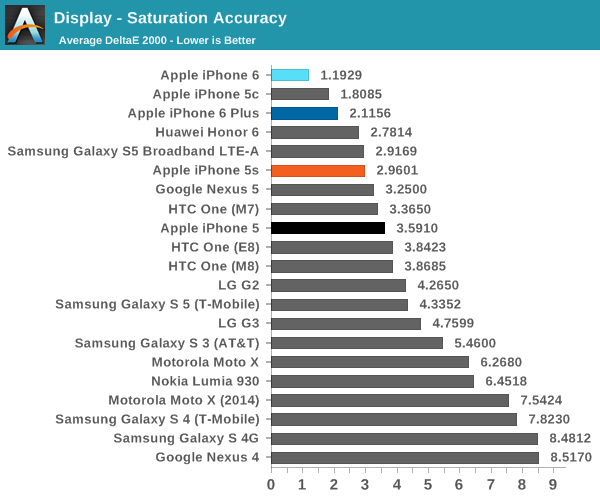
Our next test is the saturation sweep, which tests each primary and secondary color for accuracy in hue and luminance. While it’s true that humans can be relatively insensitive to differences in saturation, it is all too common to see OEMs artificially compress saturations to have vivid colors and be able to claim that they have an accurate display because it matches the sRGB gamut. In this test, the iPhone 6 sets a new record. I really don’t have any objections here because a dE2000 value of 1.19 is a deviation that is almost impossible to notice.
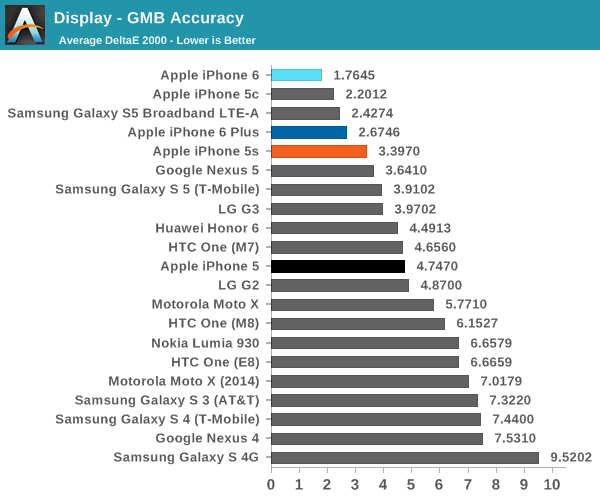
The final test is the Gretag MacBeth ColorChecker, which tests various hues and is usually one of the hardest tests to perform well in. In this regard, the iPhone 6 once again sets a new record for accuracy. This display is effectively calibrated to sRGB, and one would be hard pressed to find a significant deviation when compared to a reference monitor.
Overall, it’s hard to find any criticism for this display. I would normally be incredibly suspicious to see these numbers on a smartphone, but the fact that there’s a hot pixel in the center of the display suggests to me that this was not a cherry-picked unit. The fact that I find this level of calibration to be suspicious speaks volumes about how good this display is. While contrast isn't AMOLED levels of black, there are no purple smearing effects, noticeable uneven luminance near black, or any other idiosyncrasies.


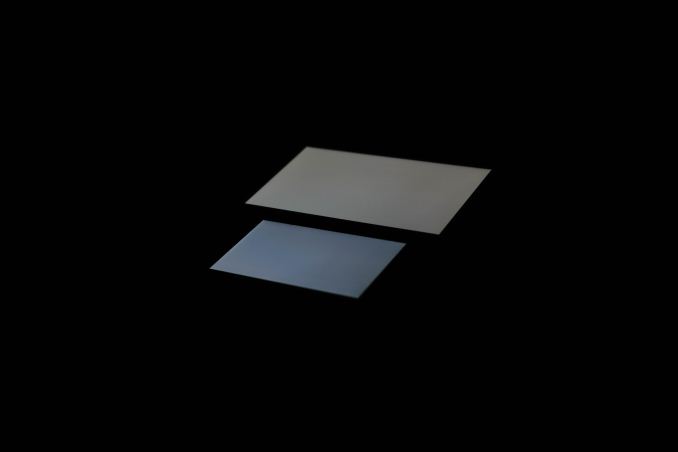
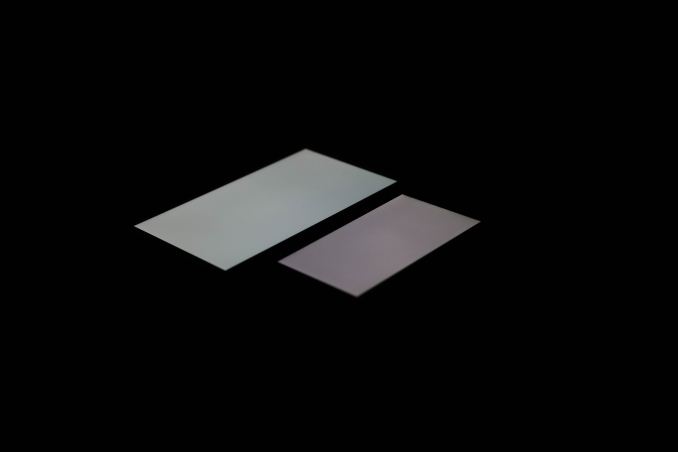
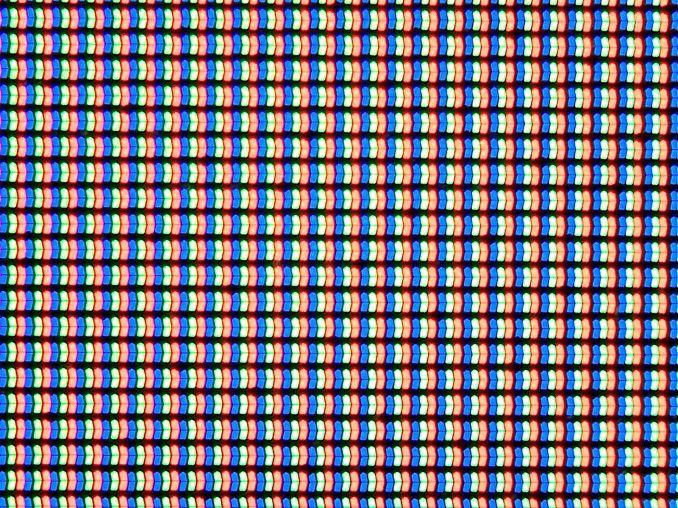

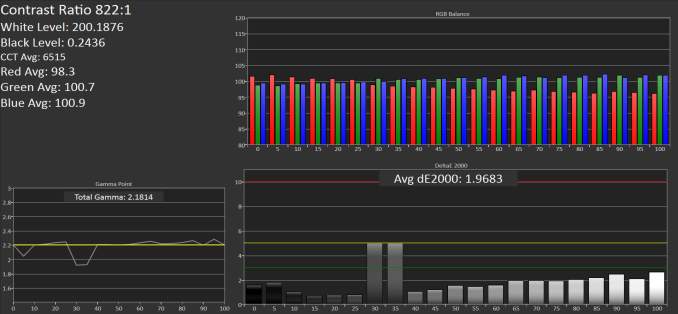

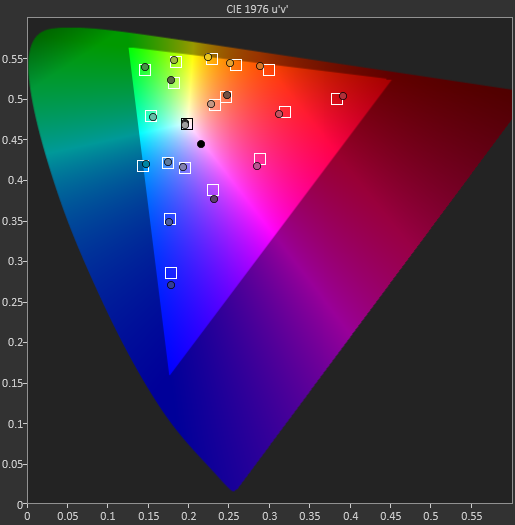








531 Comments
View All Comments
akdj - Friday, October 3, 2014 - link
I'm thinking you've NEVER used an iOS device in your lifetime. What s ridiculous comment. I use both and I'm a happy 'customer'. Half the RAM? Try a third. My Note 3 has 3GB. Cold boot to a fresh screen, within thirty seconds she's using 2.1-2.3GB of RAM. And my Note is a business tool without a bunch of apps, side loads or 'leaks' in software. Funny thing, happy customers make for healthy sales. VERY HAPPY People break RECORDS with each subsequent release...which, in turn, you're correct. Makes happy stock holders. Breaking records year after year isn't because they're using 'cheap' components or 'holding back'. It would've been MORE profitable to maintian the same pricing scheme without the 128GB (only industry OEM offering this much storage at these read and write speeds) & WITH 2GB of RAM. Significantly cheaper. But there's a solid reason and Apple's engineers are s bit more intelligent than you Mr. danBob. Sorry, the truth hurts but these dudes blew minds releasing the first 64bit SoC. First to utilize the A8 instruction set and they're designing low level graphic (Metal) programming to eliminate overhead of GL-ES. A 4MB buffer on the SoC and incredible optimization to its own OS.
Keep in mind ..,the development community is signficantly more active on iOS and they're making 85-90% of the defelopment 'money!' iOS users 'buy' apps. Spend money and enjoy their experience. Small display? 4;7" has been deemed perfect by MANY! And 5.5" is RIGHT there with. The largest available. Battery? Did you read the review? It's the Best of the Best. Period.
Before commenting, a suggestion. READ the article, review or 'book' before looking 'silly' in public!
Hemlocke - Tuesday, September 30, 2014 - link
Simple BOM breakdowns are not actually indicative of "less/more expensive." Apple's economies of scale are the envy of the tech world, and buying in great quantities and using SKUs across multiple lines brings the prices down for components. However, this takes a tremendous amount of capital, money that is spent fa in advance of receiving your goods, and generally your returns have to be enough to offset the money all of that capital is not making invested in some money-making vehicle.In mobile, basically two companies sell enough phones and tablets to do that, Apple and Samsung. Samsung sells more devices, but that is across many lines each year, with almost no common components. Thus, they aren't able to leverage economies of scale in the same manner as Apple, who makes two main lines each year (The newest iPhone and iPad), with secondary sales on the previous models, which still employ the internals introduced the previous year.
tl;dr: Samsung BOM is not the same as Apple BOM.
danbob999 - Wednesday, October 1, 2014 - link
Actually Samsung shares a lot of components between different phones. And they do have economies of scale on the same level as Apple. This is not enough to explain why Apple phones are cheaper to make according to iFixit estimates.cupholder - Wednesday, October 1, 2014 - link
Still a cheaper phone. Quit deluding yourself.Jumangi - Tuesday, September 30, 2014 - link
Yea their phones are so cheap that they are the best selling smartphones in the world. Go away hater.extide - Tuesday, September 30, 2014 - link
You do know that they are actually NOT the best selling smartphones in the world... right..?Hemlocke - Tuesday, September 30, 2014 - link
I'm pretty sure he meant the iPhone, which is the best-selling smartphone in the world, generation after generation.kirito - Tuesday, September 30, 2014 - link
I like to see your comment once samsung would release an all aluminum phone. so many excuses.kirito - Tuesday, September 30, 2014 - link
I like to see your comment once samsung would release an all aluminum phone. so many excuses.danbob999 - Tuesday, September 30, 2014 - link
They have. It's the Galaxy Alpha. I don't like this phone. I hope Samsung goes back to plastic.